Errata: Due to a technical error, this report was published in the number 150 of Condé Nast Traveler Spain (Spring 2021), print edition, last two pages missing. Full text and travelogue with all addresses below.
funny how beauty can mitigate the darkest of stories. In the film L'été meurtrier of 1983, the very hard plot that spins all Jean Becker's tape fades into the background, overshadowed by the lush and almost unreal harmony of Isabelle Adjani. Next to it, the blossoming Provencal landscapes dotted with stone villages follow one another as one more character in the footage.
This cult film, which earned the Parisian actress the second Cesar award of her career, captured for posterity the anatomy of a region that is hypnotic to the traveler due to its extreme beauty, and that, whatever time passes, it remains intact regardless of the season that surrounds it or the mood that accompanies us.
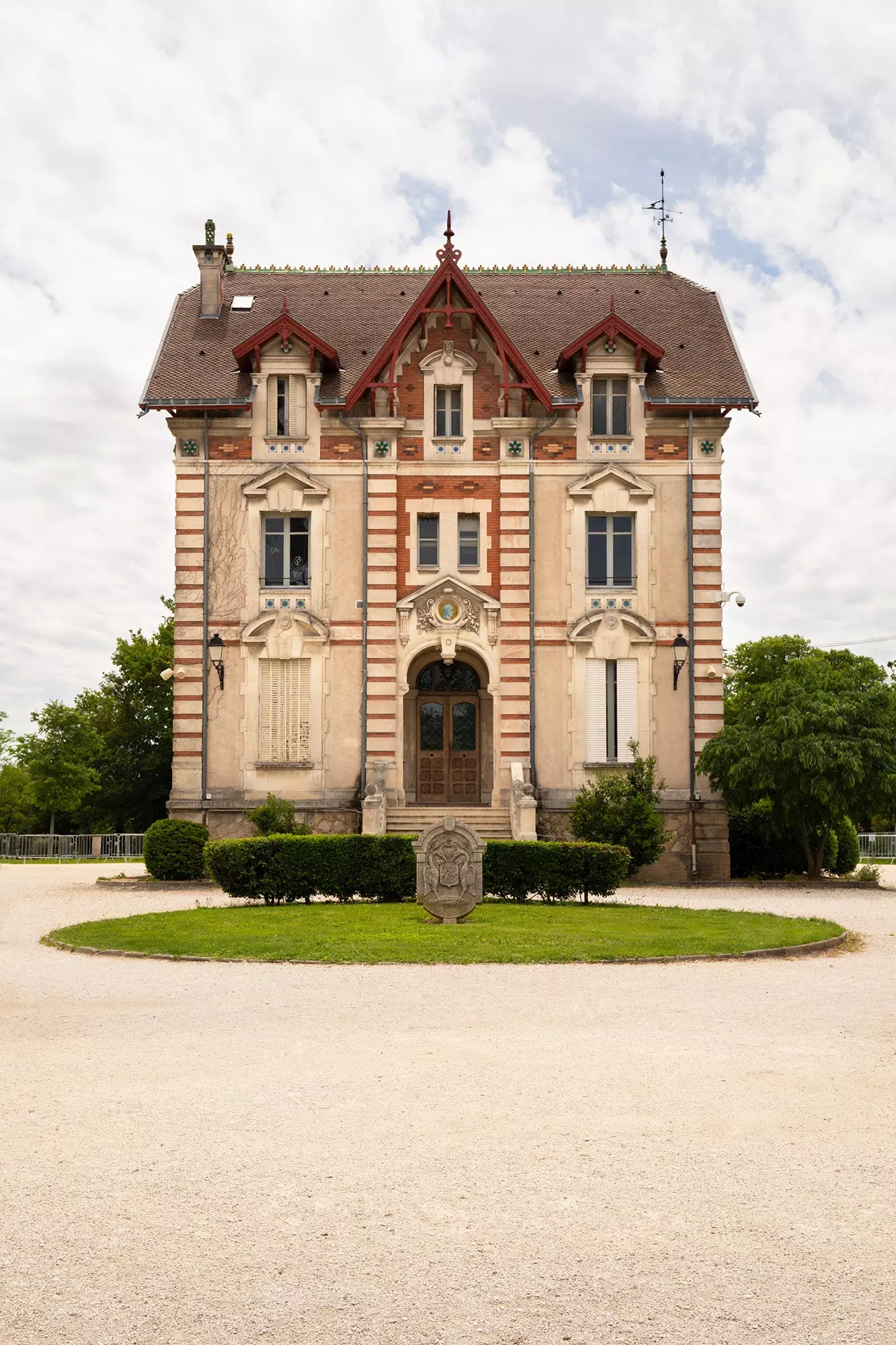
The château del Parc Gautier, which the musician Frédéric Giraud had built in L’Isle-sur-la-Sorgue, deserves a full-fledged “accidentally Wes Anderson”.
With that Stendhal syndrome in the suitcase begins a road trip into the bowels of this county in the extreme southeast of France, with the lavender fields still sleepy and guarded at all times by the Luberon, the massif that seems to split the region in two. A landscape revered by Impressionist painters under the red of Roussillon or the limestone of its perched villages, generations from all over France moved into whose rocky framework in the 1970s in search of a dream of community.
Our route slips east in search of the most beautiful territories of Bouches-du-Rhône, with the lost but still latent breeze of the Mediterranean. The first stop takes us to Lourmarin. Protected by two valleys in the landscape carved out by the Aiguebrun river, this village follows one another in the same mountains as the Luberon.
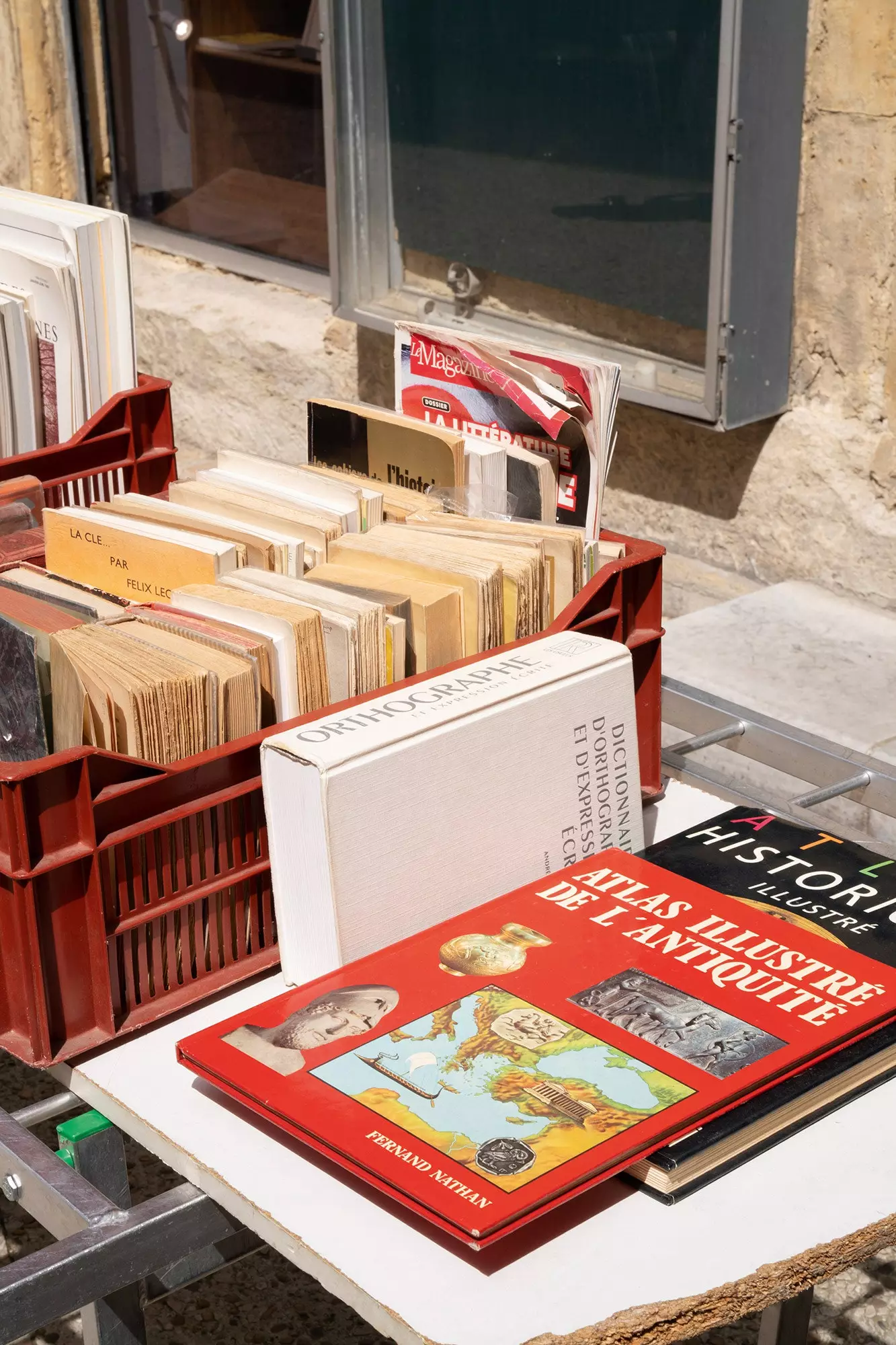
The antique market that congregates Thursday and Sunday L'Isle-sur-la-Sorgue.
here they rest the remains of Albert Camus and Henri Bosco among a handful of historic buildings like the Renaissance castle nicknamed “Villa Médicis” for becoming a residence for artists and offering concerts during the summer. Walking through the narrow streets of this town built in a spiral is an experience in itself, with modern antique shops (Galerie Marchal. Rue Henri de Savornin, 1) and a picturesque square where you can have an aperitif or penultimate spritz of the afternoon.
Scheduling the visit on the weekend has a reward: through some of its narrow streets the local market slides every Friday until noon with all kinds of artisan sausages, marinated cheeses even with lavender, bouquets of flowers and soaps. The obligatory sweet is offered by the Maison Du Gibasser workshop on the street of the same name, with its famous biscuit prepared from olive oil, anise and orange blossom water. A few minutes by car, heading south on the D943, we come across the Auberge La Fenière hotel-restaurant run by Nadia Sammut, the first chef with a Michelin star for her cooking without gluten or allergens.
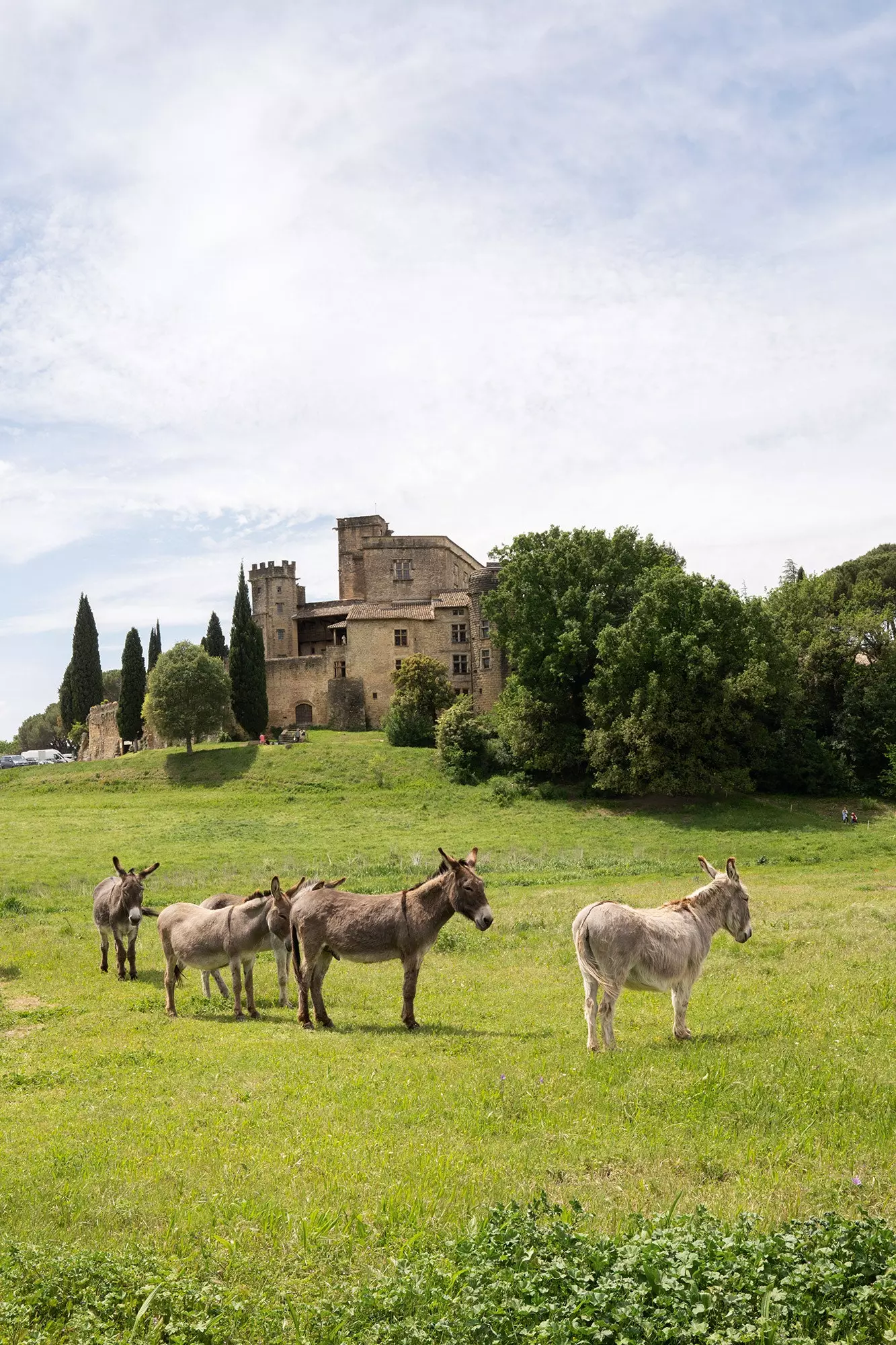
The castle of Lourmarin, nicknamed "Villa Medici".
Here the concept of kilometer 0 is taken to the extreme: its menu is made up entirely of fresh products and prepared by themselves such as preserves, breads or the infinite pantry that supplies their garden, the same one through which their guests walk daily or can start in cultivation through workshops with producers in the area. Also on the outskirts of Lourmarin, about three kilometers north of the Luberon, is Gerbaud's farm.
The scarcity of water in this part of the valley – the same one that dominated the filming of Claude Berri's classic La Venganza de Manon (1986) – made the the blankets of thyme, rosemary, sage and lavender. Those aromas known worldwide as herbs de provence They are watched over by a couple of young bohemians who carefully immerse them in oils and floral decorations.
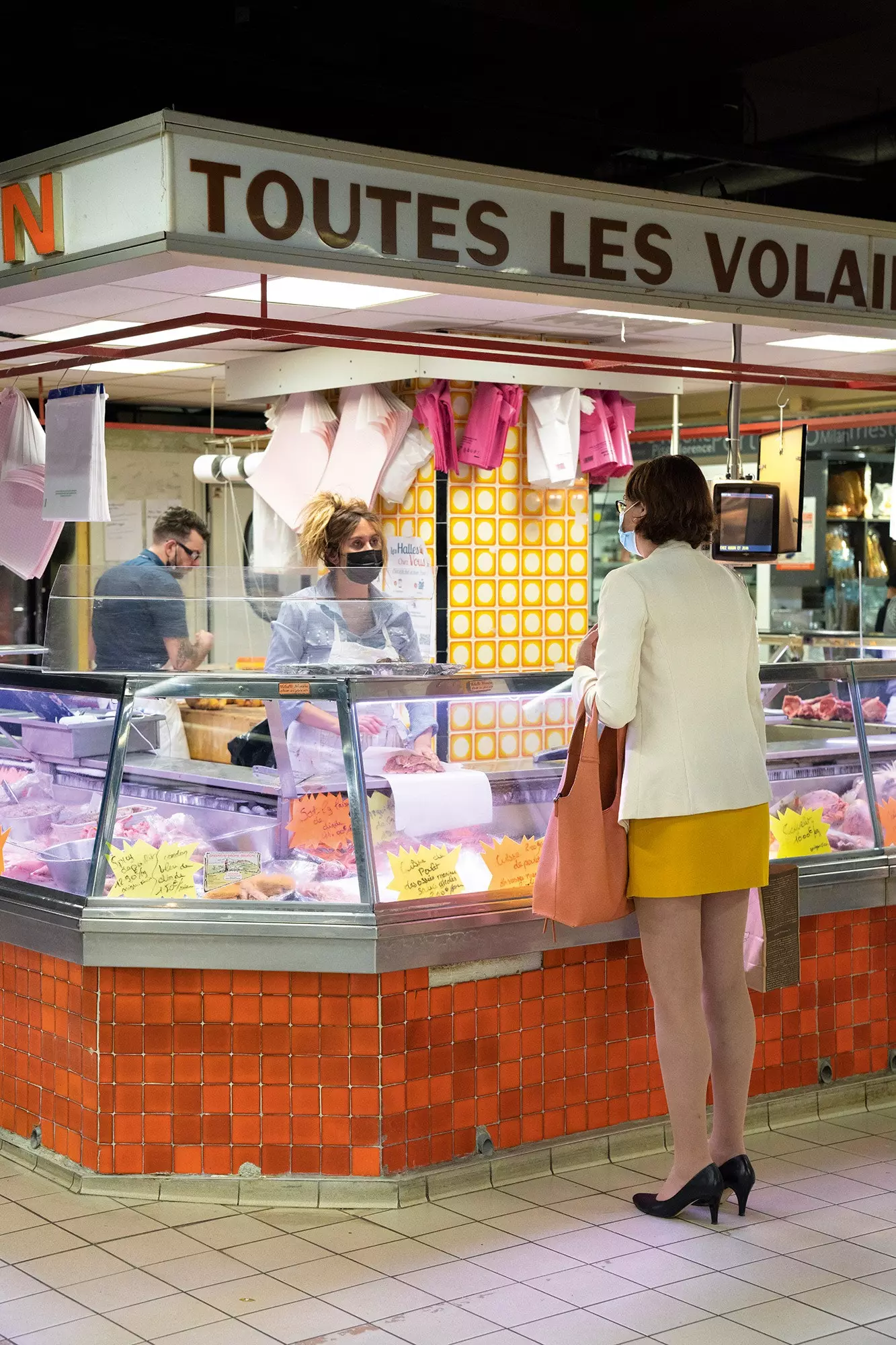
Organic and local raw material crowds the stalls of Les Halles d'Avignon.
After a quick stop in the atelier of Pakistani Christophe Bricard to let ourselves be blinded by his light sculptures, it is time to head to Avignon. Climbing first to the English garden that crowns the Peñón de los Doms will give an account of the ancient city that unfolds before us. Guarded by the Rhône River and Mont Ventoux in the distance, it is easy to imagine the religious pomp that heated Avignon in the late Middle Ages.
One of its entrances leads directly to the square of the Palace of the Popes, the elegant stone mass truncated by manicured gardens that has taken over the identity of the city. The monumental residence of the pontiffs from the 14th century is the largest Gothic work in the West, a reflection of the power and splendor which the Catholic Church enjoyed at that time. The great chapel also houses powerful examples of contemporary art, and the work of Picasso, Barceló or the most recent of the Chinese painter Yan Pei-Ming has passed through it.
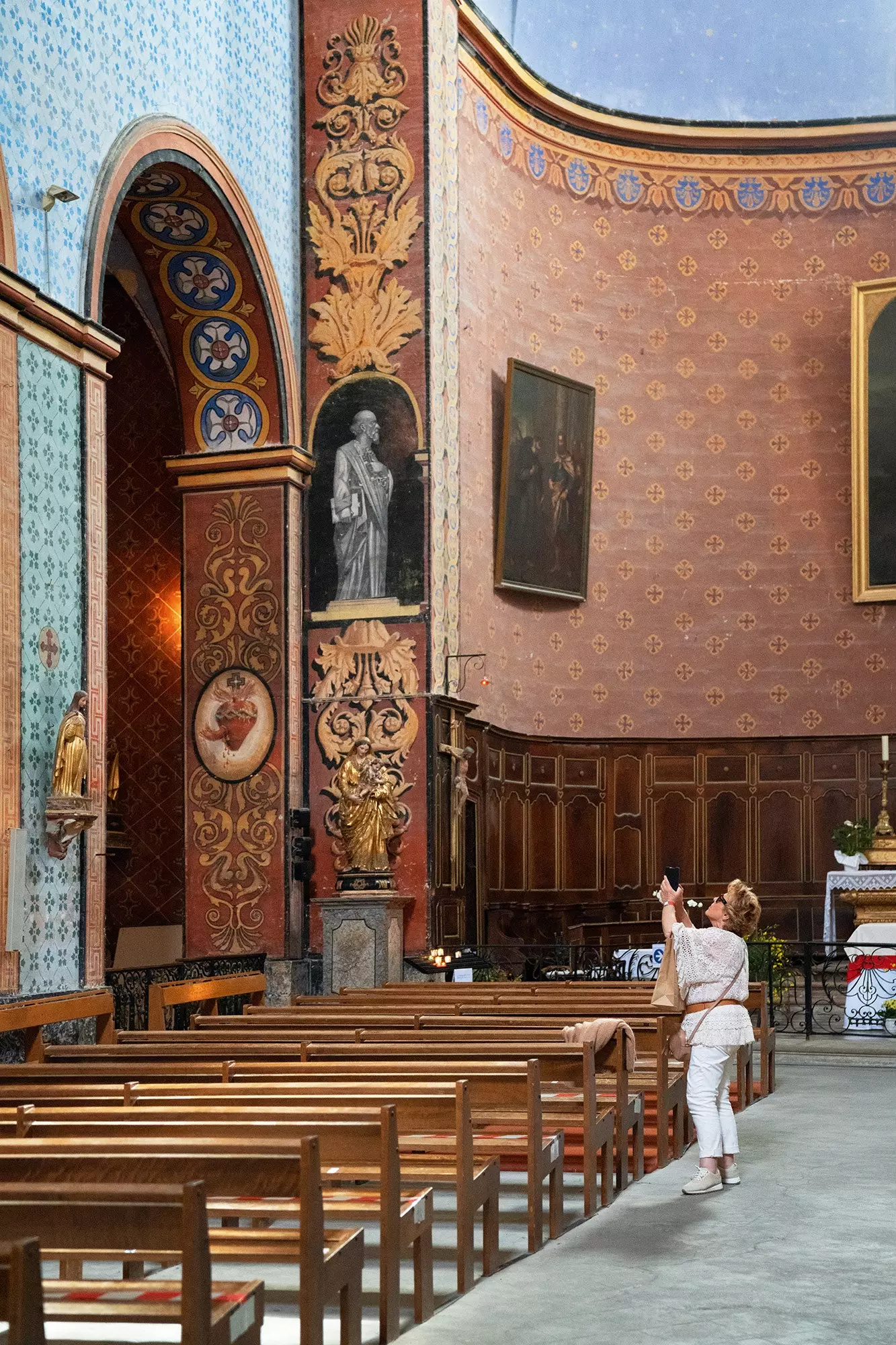
Saint-Firmin is the old church of Gordes, the village perched on a cliff with hypnotic views of the Luberon valley and the Les Alpilles mountain range.
Beside the Romanesque cathedral of Notre-Dame des Doms and the Petit Palais, converted into a museum of medieval art (both in the same square), is the obligatory visit to its World Heritage Site recognized in 1995. But not the only one. Avignon it's one of those cities where blending in with its daily hustle and bustle is almost as exhilarating how to know its historical ins and outs. And if we satisfy our appetite at the same time, much better.
Les Halles d'Avignon (Place Pie, 18) is the city's covered market where you can stock up on local products with stalls like La Maison du Fromage –its owner Nathalie proudly exhibits more than 300 types of cheese–, gobble up Mediterranean oysters (saltier and smaller) at Le Jardin des Coquillages or discover Rhône wines in one of the building's caves.
Not far from here, if we take Rue du Roi René, recognizable for its 17th century mansions, we will come to the Grand Café Barretta (Place Saint Didier, 14). This 1784 building had celebrities among its clientele such as Napoléon Bonaparte, who, they say, owed a bill of 50 francs.
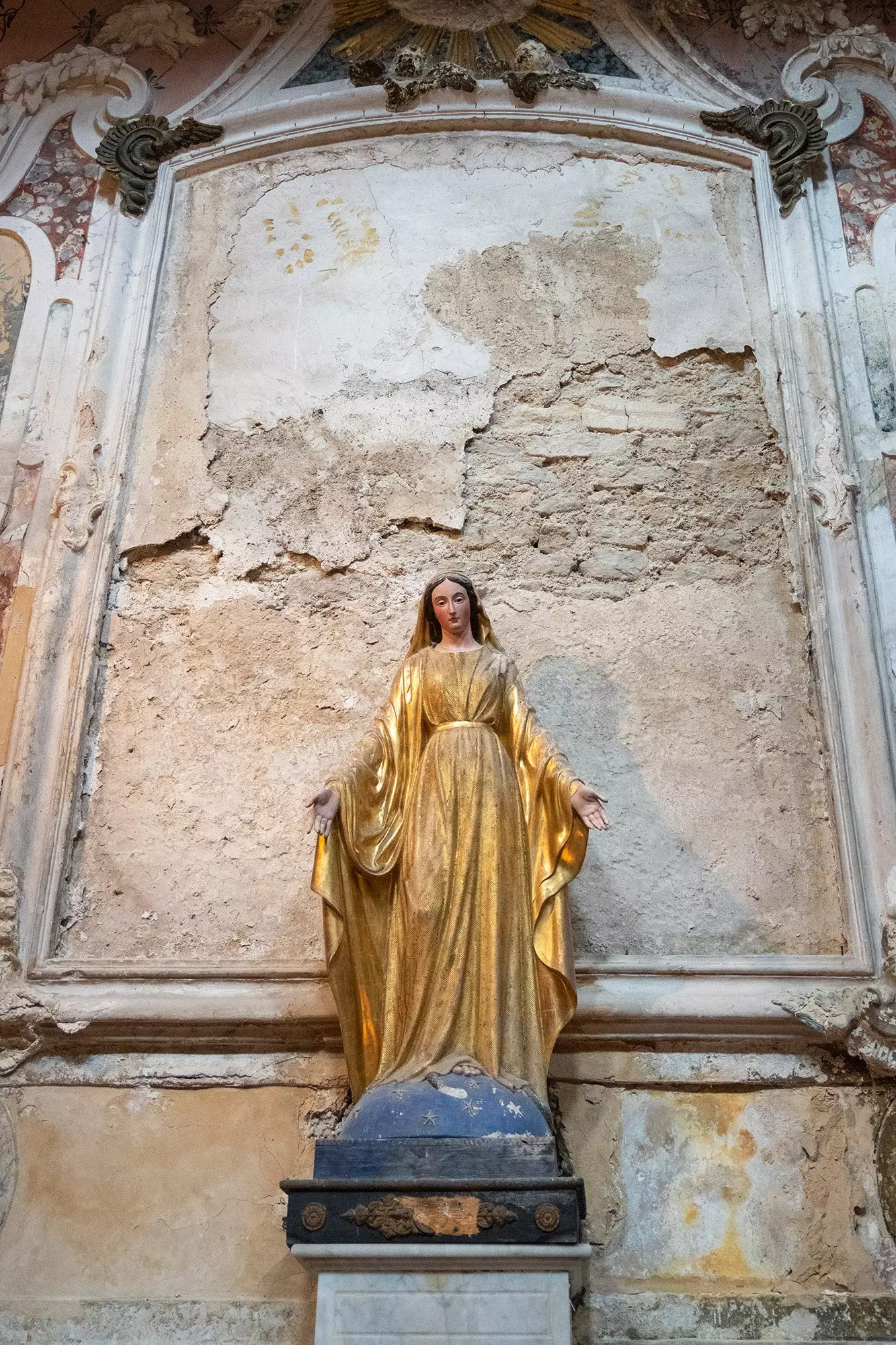
The Virgin of Gordes.
Taking distance from the city is the best way to understand its monumentality. We recommend renting a bike (Provence Bike, avenue St Ruf, 7) and crossing to île de la Barthelasse. This river island that borders the medieval town of Villeneuve-lès-Avignon is a haven of tranquility opposite the busy old town, known for its agricultural tradition and distilleries where you can taste its fruit brandies, one more guest in the French after-meals.
On the walk we will meet Saint Benezet bridge. Unfinished in appearance, it is an emblem of the region due to a famous children's song, which emboldened and resists after multiple reconstructions the floods of the Rhône river from the twelfth century.
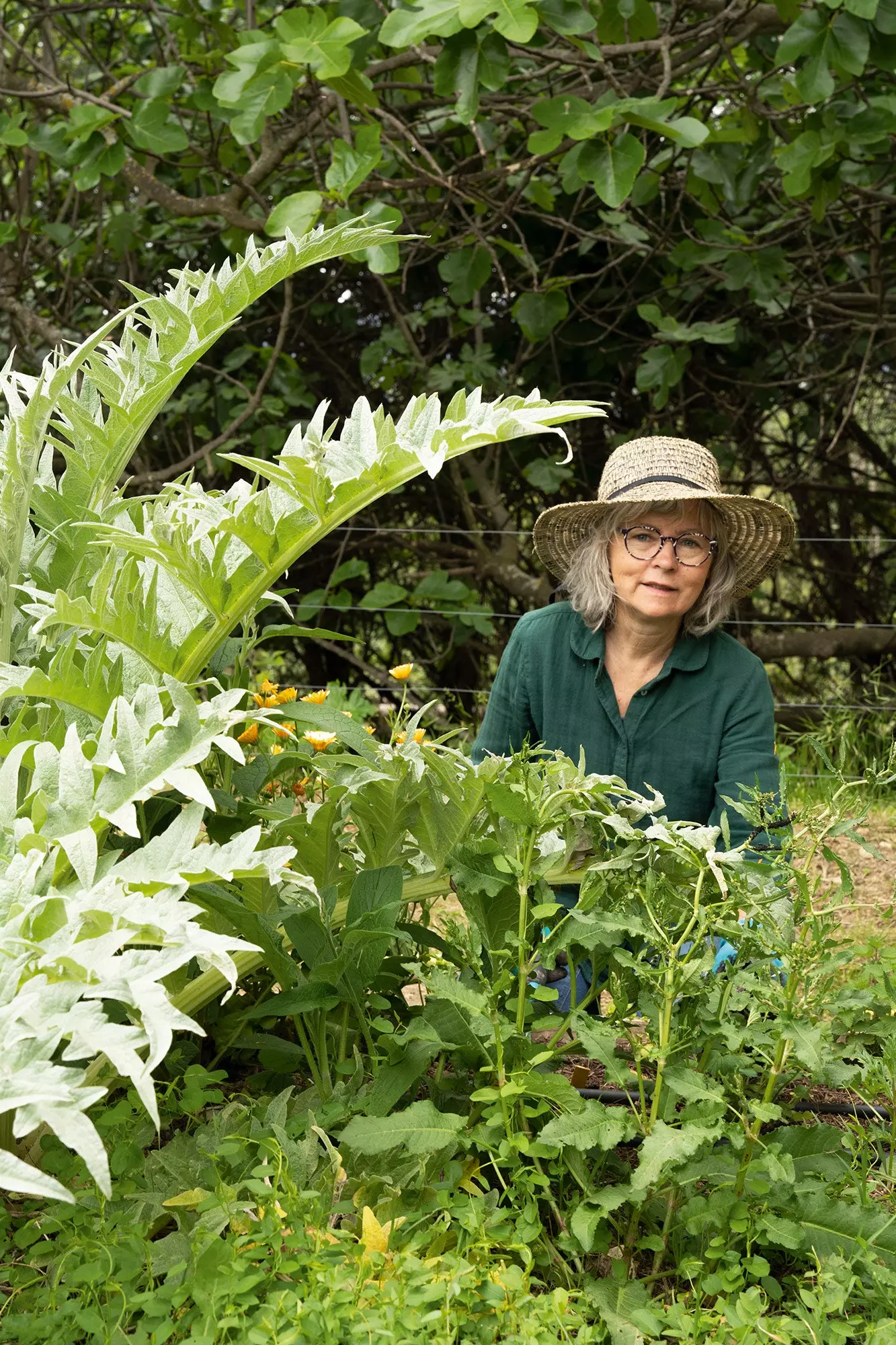
The orchard is a continuously functioning laboratory at Auberge La Fenière.
CHAGALL'S DOOM
About 25 kilometers, L'Isle-sur-la-Sorgue is postulated as the Venice of Provence due to the canals and stone bridges over the river that wind through it. If we take the D16 road, this small detour is stimulated by a visit to Grottes de Thouzon, a natural cave twinned with the Mallorcan caves of Drac for its infinite landscape of golden stalactites.
Already in this small town in the northern valley of the Luberon, the smell of antique furniture, vintage books and junk dealers invades the place. After London and Paris, it has the largest concentration of antique dealers in Europe, and it is well worth visiting both its traditional market on Thursdays and Sundays (open until 2:00 p.m.) and its its noble antique galleries.
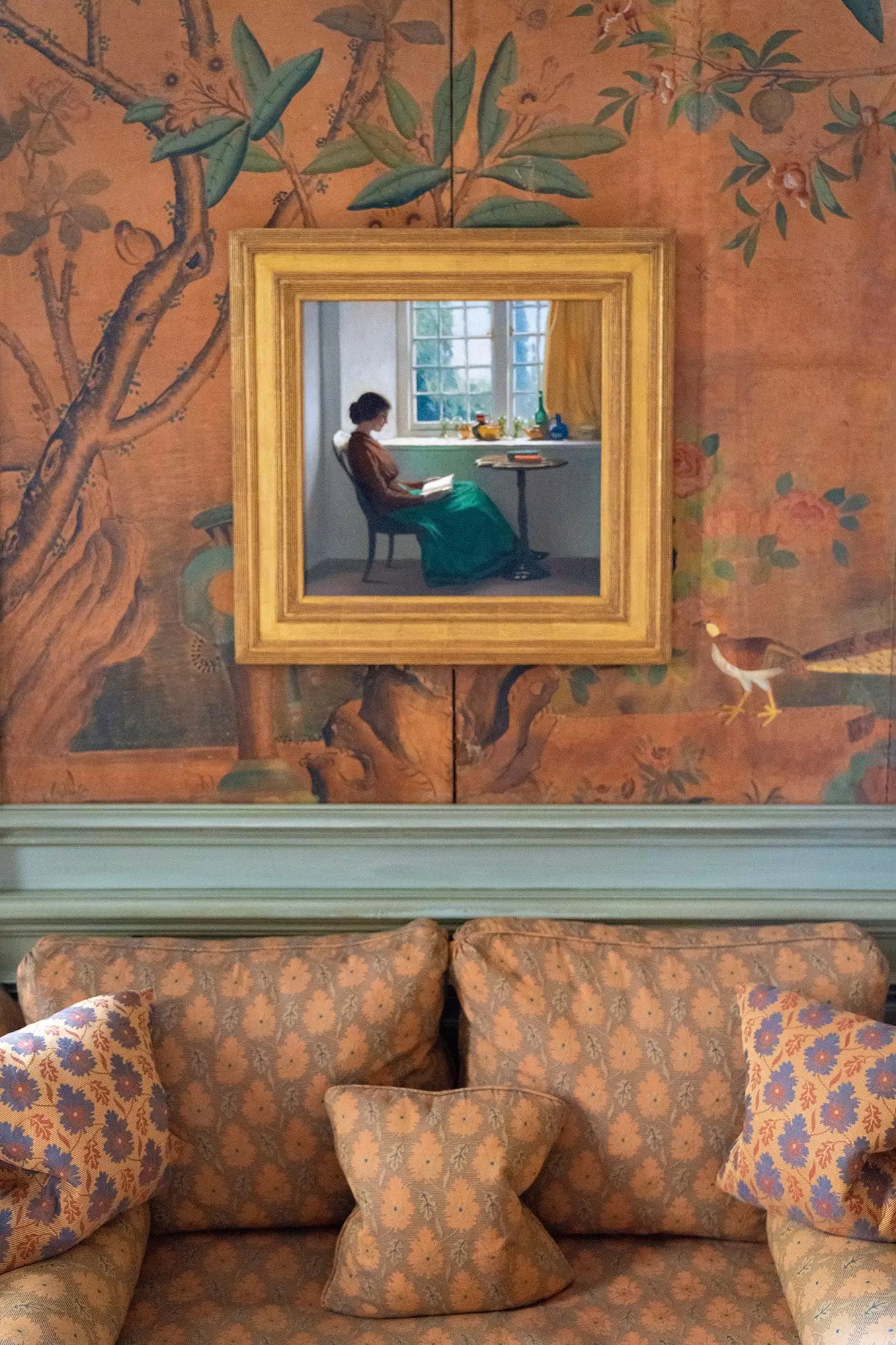
The La Mirande hotel transports you to another era with its frenzy of bourgeois styles in every corner.
It also concentrates Stalls of local producers with fruits, cheeses, oils and breads in which to devise a quick snack so as not to delay the visit to Villa Datris. This foundation anchored in a nineteenth-century residence focuses its interest on contemporary sculpture, both inside and in the monument-protected garden on the edge of the River Sorgue.
Before heading south, the return to the Luberon offers some of the most beautiful villages in France hanging over its massif and the Monts de Vaucluse. Oppède le Vieux, Ménerbes or Bonnieux could top the list, although if time is short, Gordes is that corner that takes your breath away and forces you to stop the car as soon as you see it in the distance to capture its panoramic view (the best of all is on the D15 road that connects the town with Cavaillon).
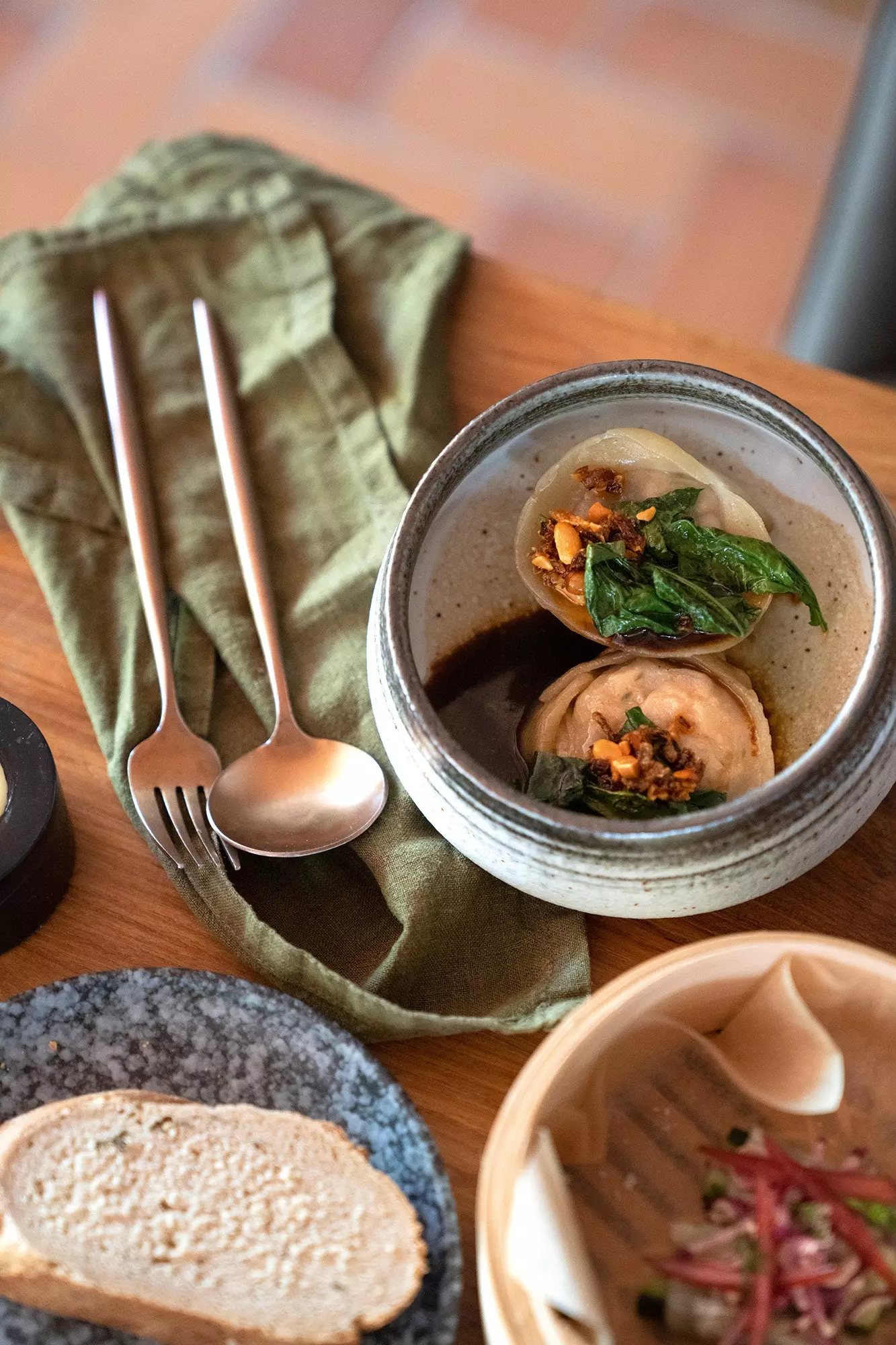
The gastronomic experience of the Eïdra restaurant is lived in Saint-Étienne-du-Grès.
This stone sentinel hanging from a cliff it was designed more than a thousand years ago to protect itself under the castle –now Renaissance– that crowns it, between labyrinths of cobbled streets and yellow limestone houses that Chagall and Vasarely could not resist immortalizing.
But its appeal lies not only in what it is, but in what it allows you to see: an almost absolute domain of the Luberon valley and the Les Alpilles mountain range, the cardinal point on which our journey continues. Not without first making a brief stop at Abbaye Notre-Dame de Senanque , a placid 12th-century monastery guarded by a small community of Cistercian monks, who cultivate the lavender fields as they used to. His shop is a good place to stock up on monastic sweets, candles, and essential oils. with which to prolong the trip a little longer on our return.
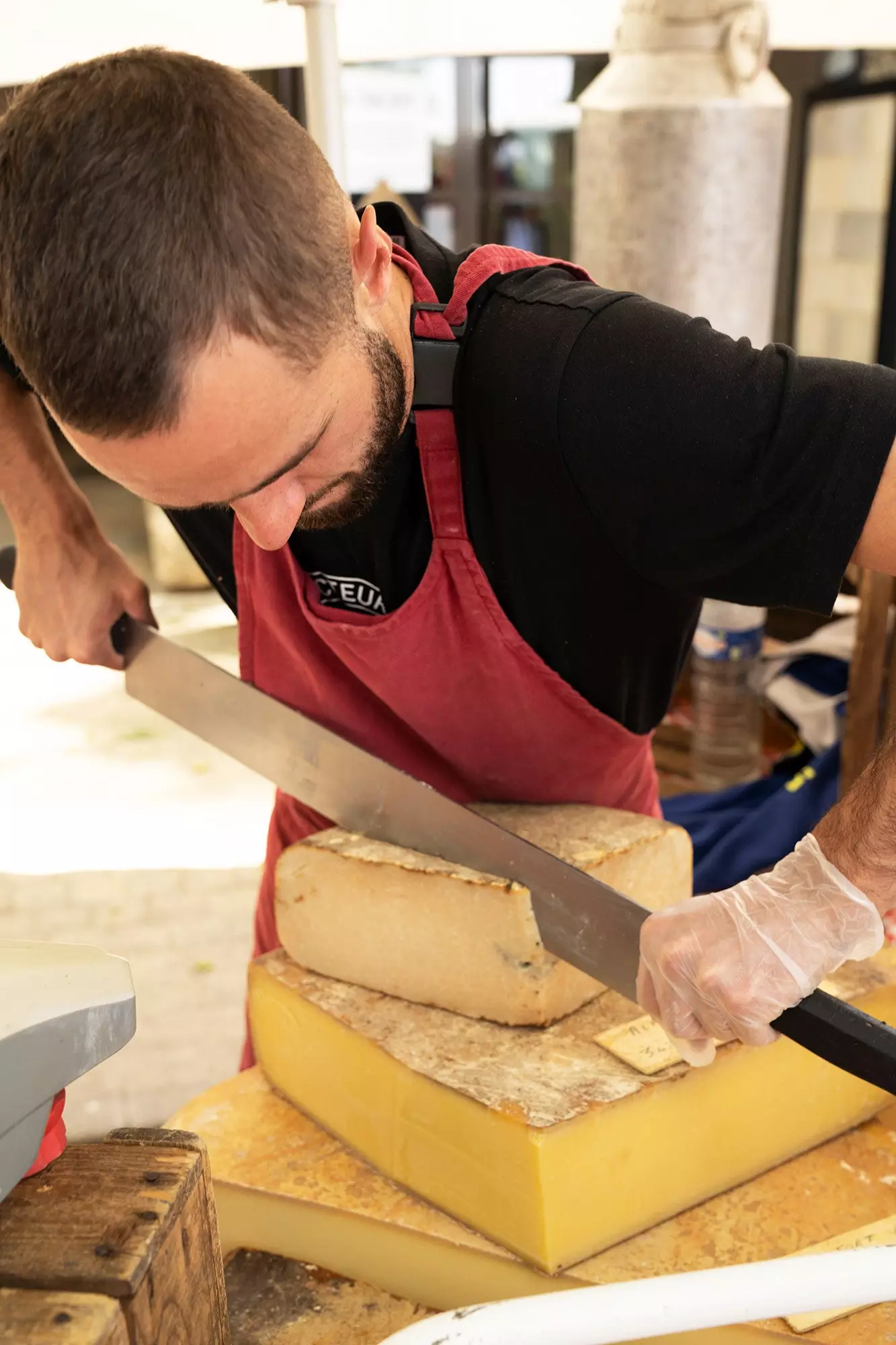
Aged, creamy, marinated with lavender... The region's cheeses are the great attraction of the market that Lourmarin hosts on weekends.
Despite its extreme climate, with summers that touch 40 ºC and the mistral wind that freezes the winter months, Les Baux-de-Provence does not let its guard down and welcomes legions of visitors throughout the year. Well to know its historical framework, dotted with g craft workshops and terraces, or as a starting point for the walking routes that run through the Alpilles Natural Park.
Its slow pace, induced by a privileged location on top of the hills and that Provençal dialect still practiced by its older neighbors, has trapped outsiders forever. Among them, the actor Jean Reno, resident and member of the city council of him. Its reduced dimensions do not prevent weighty monuments from crowding its streets; Own hotel de ville It is one of them, raised in a Renaissance palace that belonged to Claude de Manville, one of the most notorious families of the place.
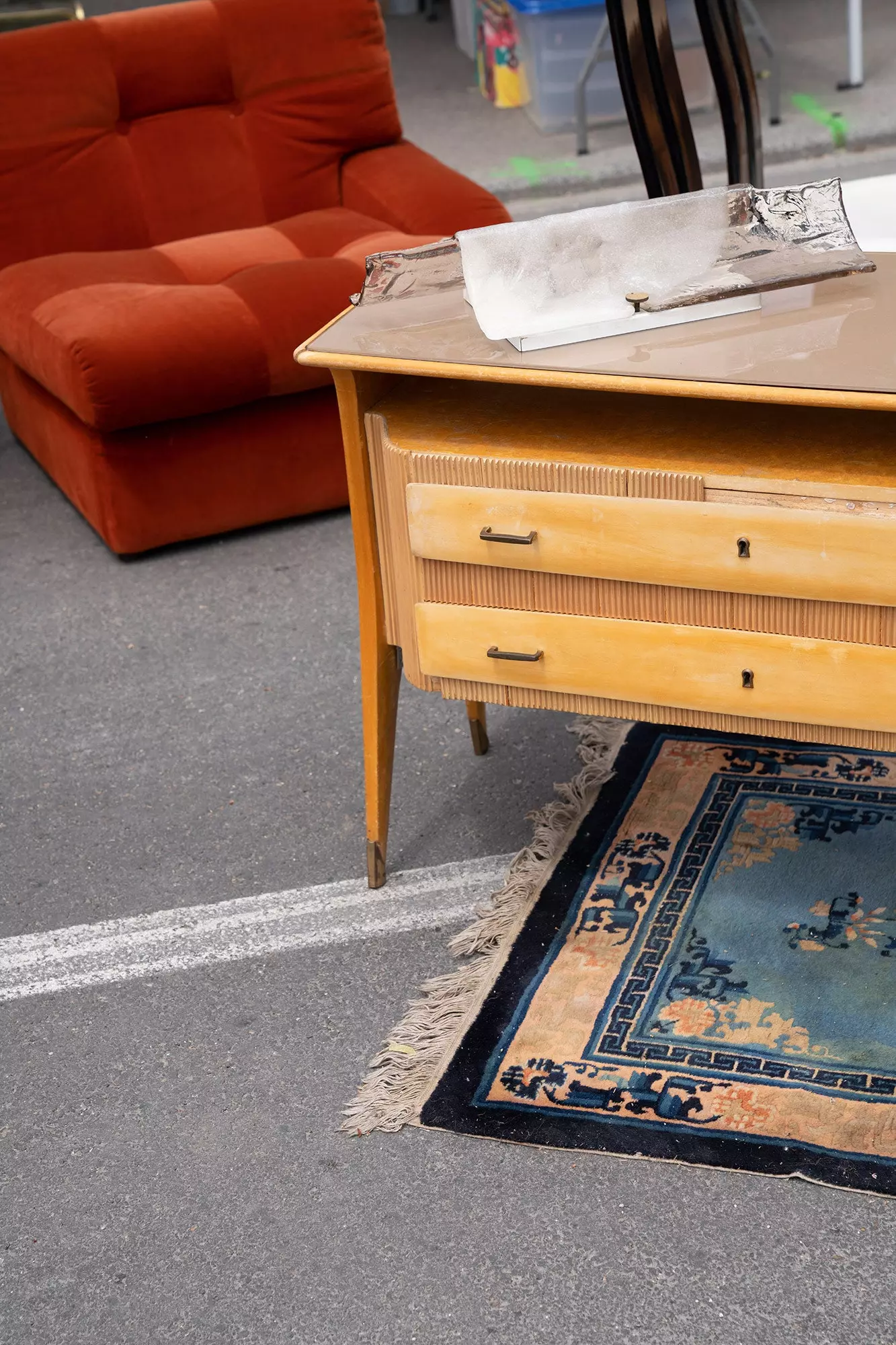
Books, retro furniture and Provencal crafts, a classic of the antiques market that congregates Thursdays and Sundays in L'Isle-sur-la-Sorgue.
Beside the 11th century St. Vincent church, the defense towers, the Romanesque chapel of Saint-Blaise or the Eyguières bridge (the oldest entrance to the medieval precinct), the remains of the Château des Baux-de-Provence just outside take all the fame. Is medieval citadel overlooking the Mediterranean and the Alps (You can even see Marseille on a sunny day) It was demolished by order of Richelieu but there are still traces of the glory it achieved. On summer days it lights up at night , and serves as a poetic setting for a picnic in their picnic areas surrounded by wild flowers.
The Baux stone that was used to build the castle, also known as pierredumidi, It is a limestone famous throughout the world for the fine grain and its yellowish texture. It was extracted from the Grands Fonds quarries, closed in the 1930s and known today as Carrières des Lumières due to its new vocation, that of project on its rock walls the work of greats such as El Bosco, Gauguin, Van Gogh or Chagall.
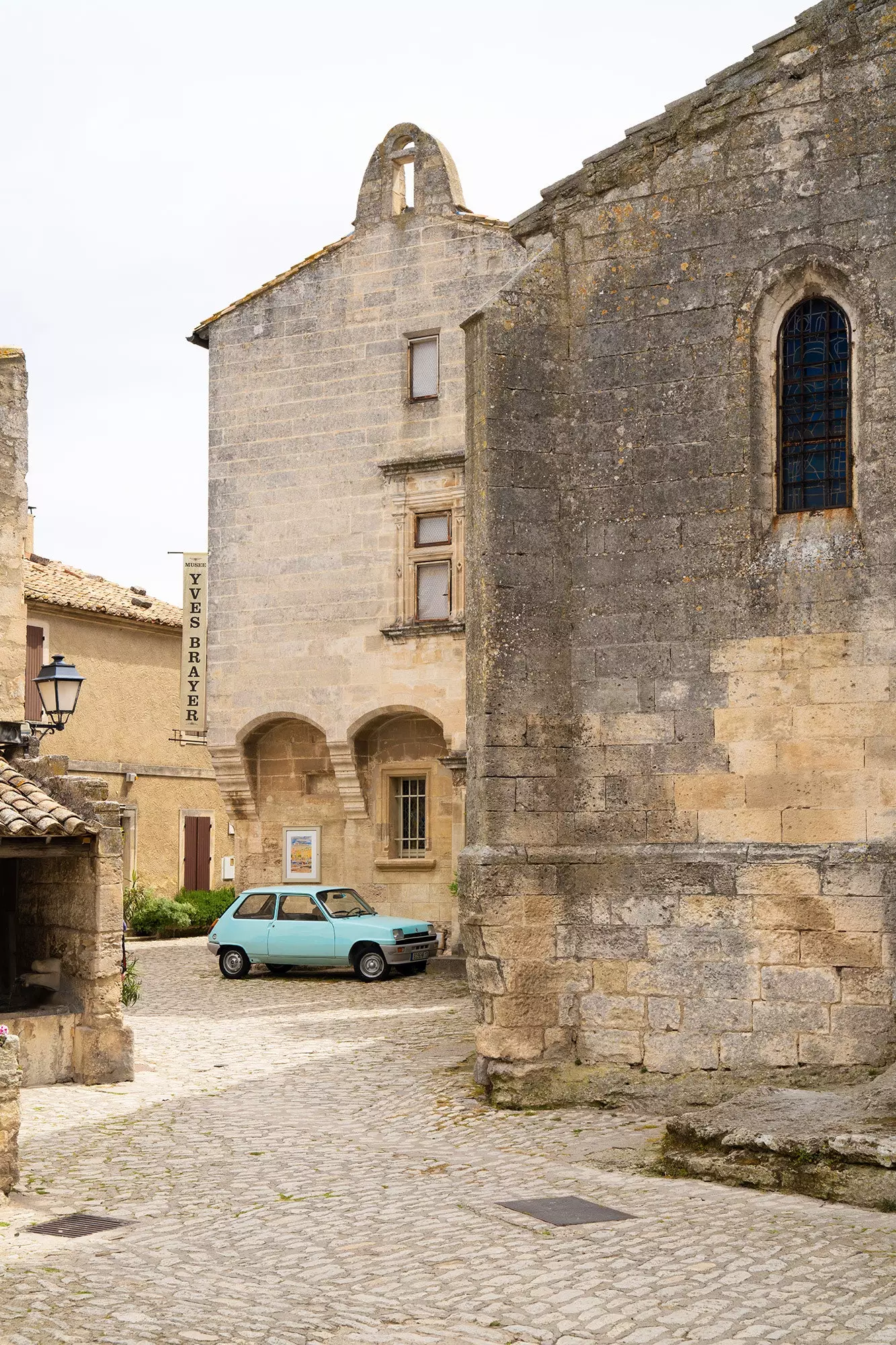
Yves Brayer Museum in Les Baux-de-Provence.
A LIVING PICTURE
The close link that this region has maintained with modern painting acts as a stimulating guide to traverse it. To Cézanne and her unconditional love for Mont Sainte-Victoire, that Picasso perpetuated with the purchase of the Vauvenargues Castle, He was closely followed by Raoul Dufy and his desire to capture the perfect watercolor of the olive trees in the region. Saint-Rémy-de-Provence, at the foot of Les Alpilles, however, it is inseparable from the figure of Vincent van Gogh.
Here lies the Romanesque Saint-Paul de Mausole monastery, which hosted the last year of the Dutch artist's life. His room in this old mental hospital it has been reconstructed just as she left it before his death, a reflection of his depressive state that germinated with one of the most productive periods of his work. Van Gogh came to immortalize up to 14 times the field that he saw from his window, where the famous eddies of his Starry Night (1889), now a recreational garden open to the public where you can stroll through the orchard and the fields of wheat and lavender, which inspired his most famous landscapes.
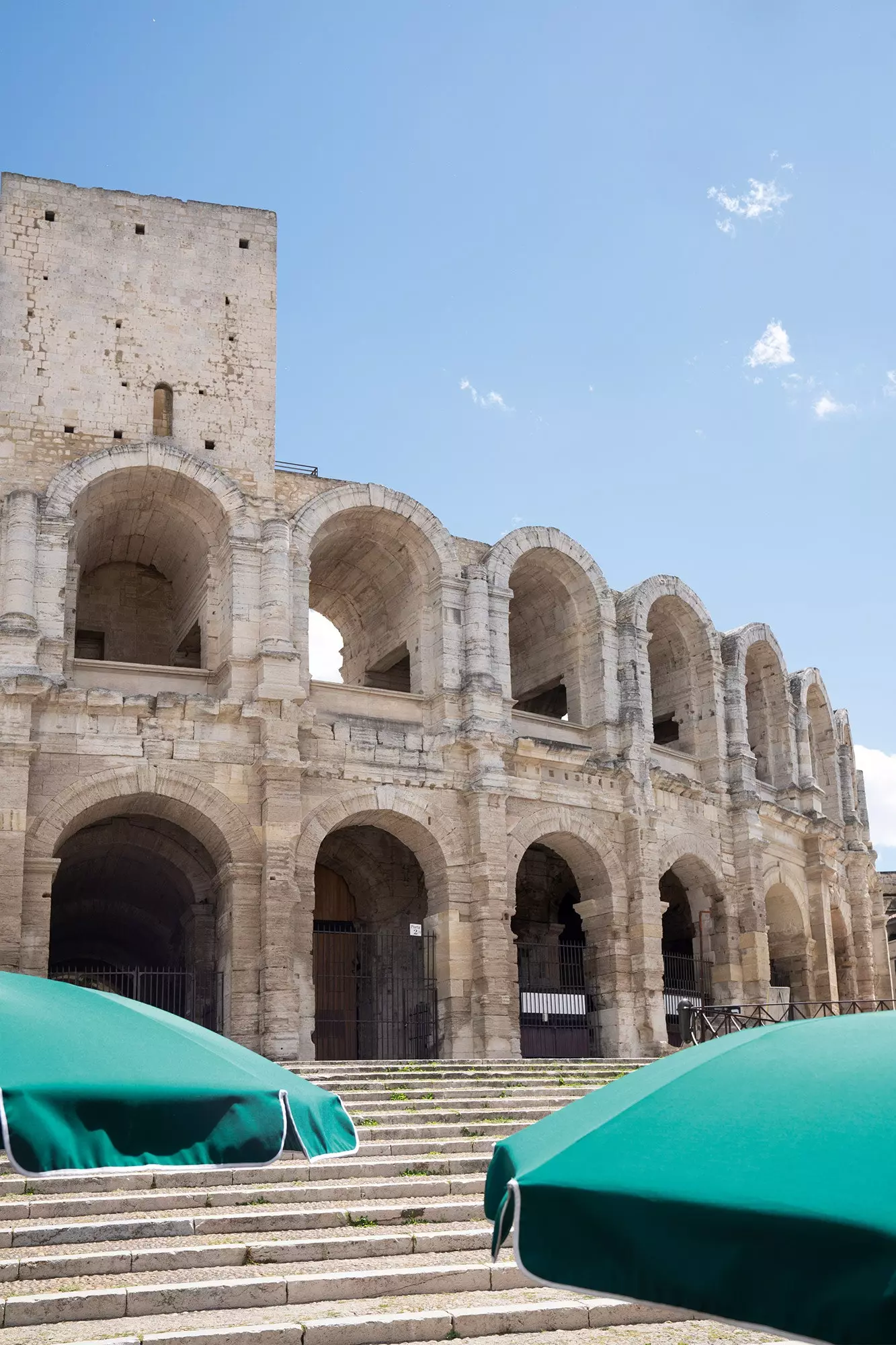
The Arles amphitheater has nothing to envy the Colosseum in Rome.
Not far from this convent you can admire the Celtic ruins of Glanum or park your car in the Israelite cemetery to access after a walk to Lake Peirouu. Barely crowded, the pine breeze trapped between the mountains will be an effective remedy if the heat tightens.
Arles, the city where Van Gogh left Paris to try to alleviate his depression, is the last stage of our tour. The Rhone River divides this region which has been the object of desire since Ancient Greece. For millennia, civilizations have wanted to leave their megalomaniacal mark here, giving rise to a mosaic of historical remains that house from a Roman amphitheater (Arènes d’Arles) to the Baths of Constantine or the Romanesque cathedral next to the Cloister of St-Trophime.
Each corner can accumulate centuries of history, some preserved just as they were revealed, and others as the setting for new stories, such as the Reattu museum, with an amazing collection of sound art or the different buildings that since 1970 host each summer an edition of Les Rencontres d'Arles, the most prestigious photography festival in Europe.
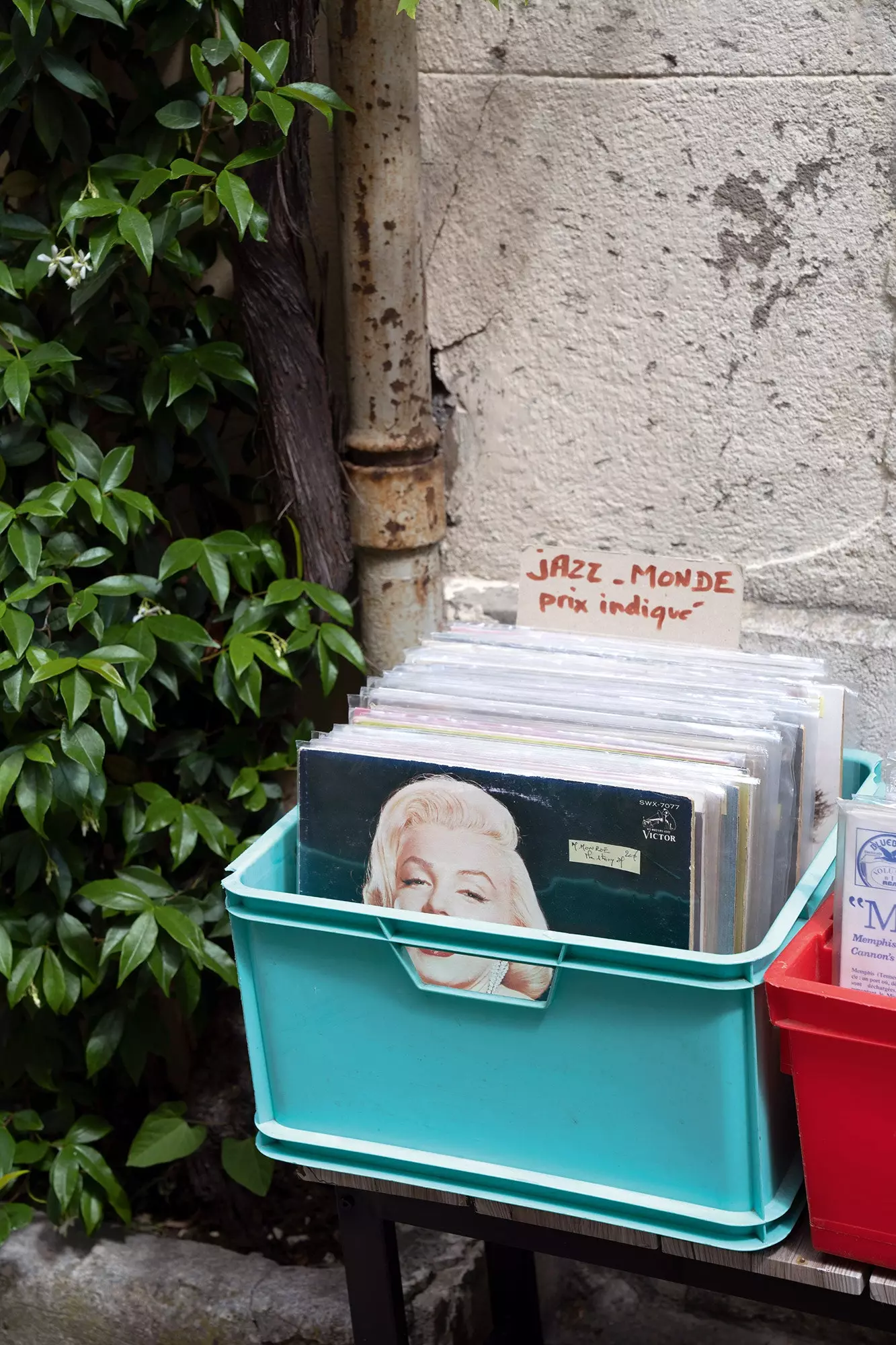
Vinyls in Avignon stalls.
With Van Gogh's almost lingering shadow at every step (the Langlois Bridge bears his middle name), strolling through Arles at dusk is like walking through one of his paintings. Of the impressionist cafe with its yellow facade (of course) that illuminates the Place du Forum to the ancient Hotel-Dieu-Saint-Esprit, where the artist was admitted after cutting his left ear during a discussion with Gauguin.
In the distance, the new luma-arles raised by Frank Gehry lights and rocks , as if it were a lighthouse, to everyone who says goodbye to this land and the tormented beauty of it. Like the starry sky of an alienated artist or the perfume of the wild field for which the young Adjani fled one day.
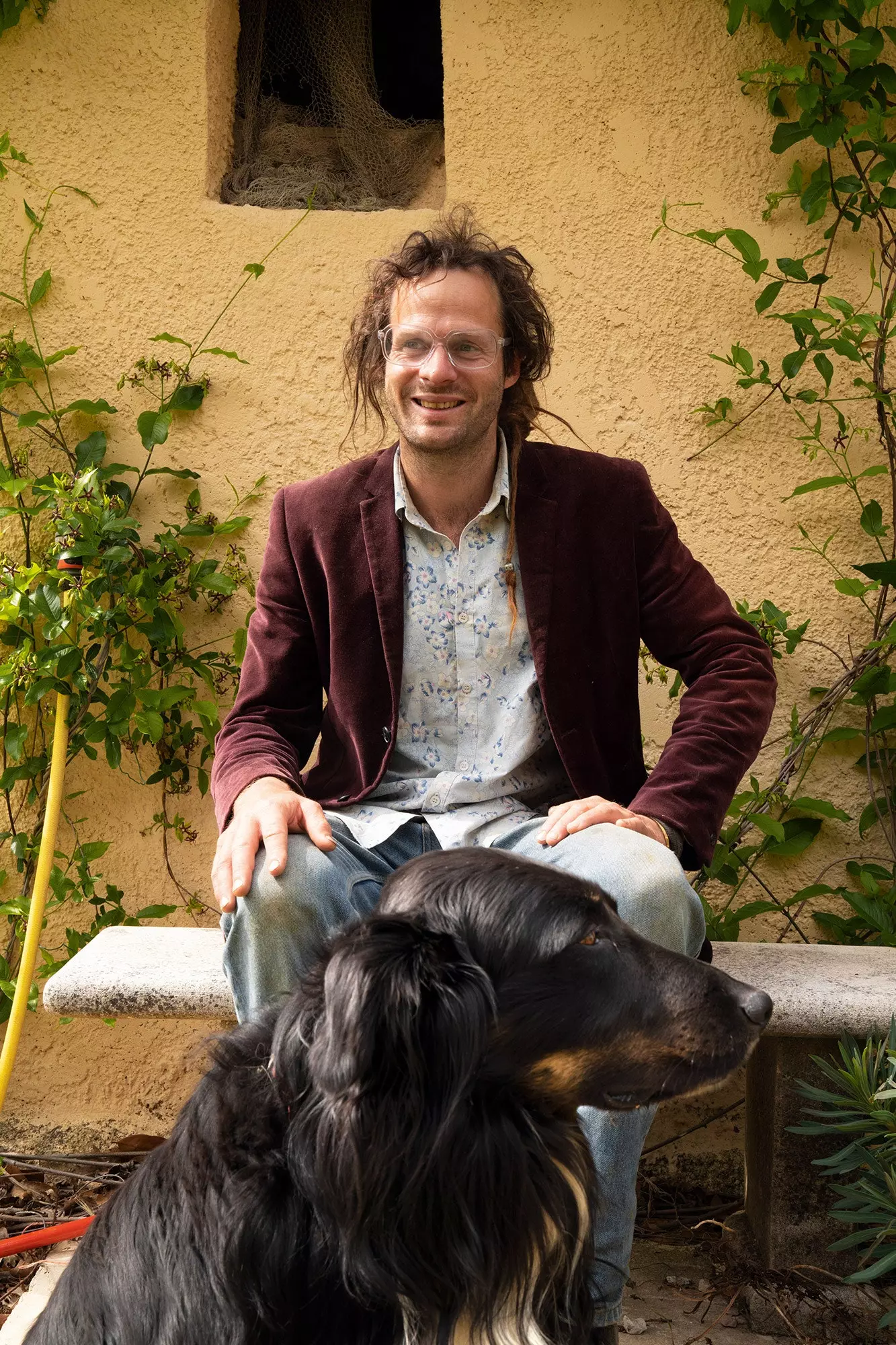
The 'alchemist' and owner of La Ferme de Gerbaud, the farm where you can discover the magic of Provencal herbs.
HOW TO GET
Iberia: Direct flights Madrid- Nice (from €69).
Renfe-SNCF: The AVE Madrid-Marsella (with a stop also in Barcelona) will be available again on April 8.
WHERE TO SLEEP
Le Galinier de Lourmarin: D943 Avenue du 8 Mai. Loumarin. Phone +33 (0)6 80 50 06 62.
For those who have burned that idyllic scene of a Provençal villa where you can have homemade jam for breakfast on little white wrought iron chairs or dive into its stone pool.
More from L'Oulivie: Quartier Les Arcoules, Chemin departmental, 78. Les Baux-de-Provence. Tel. +33 (0)4 90 54 35 78. The perfect formula if you prefer to rest away from the tourist bustle that usually dominates Les Baux-de-Provence but without abandoning it. Rooms open to a garden of olive trees and lavender, in the natural park of Les Allpilles, it has a spa, swimming pool and terrace.
The Mirande: Place de l'Amirande, 4. Avignon. T+ 33 (0)4 90 14 20 20. Shop a bubble bath with a view of the papal palace it is not a delight reserved solely for the church body. In 1997, the family of Martin Stein acquired this medieval palace from a cardinal to transform it into a luxury hotel with historic furniture, fabrics and wallpapers that recall the styles that the nobility venerated between the 17th and 19th centuries.
In addition to making us feel like Marie Antoinette with her breakfast table cluttered with china and silver teapots, this residence hides a gastronomic jewel inside. The restaurant that runs chef Florent Pietravalle (former sous-chef at the Pierre Gagnaire in Paris) gets rid of naphthalene to experiment with our senses and that inexhaustible source of organic products that the area offers. Reserve a table at sunset on your terrace, without haste and with an empty stomach, because the tasting menu deserves it.
Hotel de Tourrel: Rue Carnot, 5. Saint-Rémy-de-Provence. Tel. +33 (0)4 84 35 07 21. The absence of any indication on your door that we are in front of a hotel is not accidental. Architect Margot Stängle and interior designer Ralph Hüsgen wanted their guests not to feel like they were in a hotel. The non-decoration and the white that dominates its rooms seems to contain that light of Saint-Rémy-de-Provence, as Hüsgen says, “unique in the world, by night or by day”.
L'Arlatan: Rue du Sauvage, 20. Arles. Phone +33 (0)4 65 88 20 20. Minimalism is not a recurring word in the universe of Cuban Jorge Pardo, and in this hotel it was not going to be less. His debut in interior design transformed a Roman basilica into a residence with 60's twists, marvelous colors and mosaics (including its swimming pool).
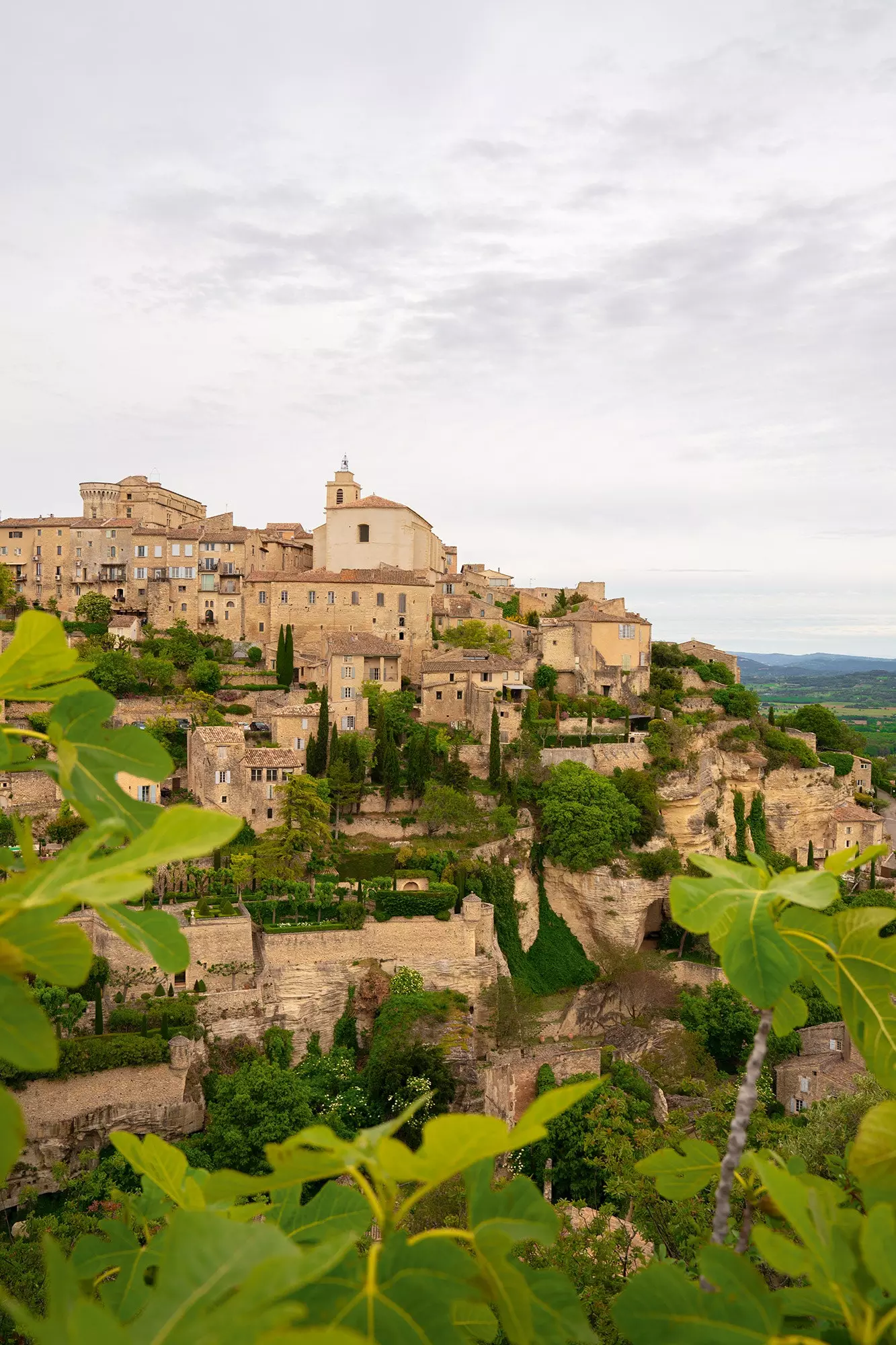
Panoramic view of Gordes, in Provence.
WHERE TO EAT
auberge de la feniere: Route de Lourmarin 1680. Cadenet. Tel. +33 (0)4 90 68 11 79. This gastronomic hotel holds the first Michelin star awarded to a restaurant with allergen-free cuisine. Nadia Sammut, the third generation of cooks in her family, eliminated all gluten from her menu in 2018 by creating her own flours and resort to the inexhaustible "supermarket" of her garden. It offers programs with yoga and ayurveda.
Manguin Distillery: Chemin des Poiriers, 784, Avignon. Tel. +33 (0)4 90 82 62 29. Tasting at the Béatrice and Emmanuel Hanquiez distillery is a good excuse to escape to île de la Barthelasse on our way through Avignon. In the 1940s, its founder Claude Manguin cultivated hectares of pear and peach trees on the fertile land of the island to supply the most prestigious stores in the country with its fruit. Almost two decades later, the distillery was added, which gave rise to the Poire Manguin brandy, a classic made with pear alcohol.
Eidra: Avenue de Saint-Rémy, 3. Saint-Etienne-du-Grès. T + 33 (0)9 75 60 50 92. Matthew Hegarty and Coline Leenhardt are two young enthusiasts about eating well. The Austrian won his first Michelin star at the Chalet Mounier in the Alps, and he featured his cooking in the French edition of Top Chef. Coline specialized in pastry in Marseille while developing her passion for cocktails.
Chapeau de Paille: Boulevard Mirabeau, 29. Saint-Rémy-de-Provence. Tel. +33 4 90 92 85 78. Provençal bistro decorated with straw hats and vintage artillery, either to order a lunch or to enjoy on your terrace with the recipes of Julien Martinat. The perfect excuse to try the wines of former footballer René Milan, Fontchêne Léon, a winery in Les Alpilles that local restaurateurs guard with suspicion.
Du Bar à l'huitre: Place du Forum, 12. Arles. Tel. +33 4 90 97 94 38. Under the shadow of the writer Frédéric Mistral, a new order brought from the sea arrives every day at this terrace in the old town. Sea bass, Camargue oysters, Galician sea urchins...
WHERE TO BUY
Gerbaud's Ferme: Chemin de Gerbaud, 11. Lourmarin. Tel. +33 (0)4 90 68 11 79. This farm in the heart of the Luberon offers a guided tour (3pm and 5pm, depending on the time of year) through its hills to learn how herbs de Provence are grown in their natural environment.
L'Atelier de la Bete a Cornes: Rue de la Bonneterie, 81. Avignon. Tel. +33 (0) 06 22 04 33 88. Dominique and Marc, fashion designer and interior architect respectively, offer all kinds of lithographs, books and paintings with printing techniques rescued from the past.
L'Atelier des Curiosites: Rue des Teinturiers, 43. Avignon. Tel. +33 06 65 28 93 50. While André dusts off original editions of essays on the shelves, Véronique plans the next pottery workshop. As his name indicates, during your visit to this cabinet of curiosities the surprise factor plays its tricks.
L'Ile aux Brocantes: Av. Quatre Otages, 7. L'Isle-sur-la-Sorgue. This small town of antique dealers is a mandatory stop. It has forty shops where you can lose track of time. Hunger will not be an obstacle thanks to the Aux Cocottes restaurant and its traditional cuisine.
Le Comptoir des Carrieres: Le val d'enfer, D78G. Les Baux-de-Provence. Tel. +33 6 46 50 52 59. Wines and decoration. This always well-matched tandem is the proposal that Daniel Pernix established in a stone quarry.
Domaine de Métifiot: Voie Communale des Carrières, 13120. Saint-Rémy-de-Provence. Tel. +33(0)6 76 75 79 48. This family estate has been collaborating since 2016 its own vineyard with olive groves that give fruit to its organic olive oil.
The Library of the Palais: Rue du Plan de la Cour, 10. Arles. Tel. +33 9 86 35 54 55. This bookstore specializing in photography, independent publishers and old editions and rarities, with a special nod to the female signature, reference in his name to Louis XIV's fondness for books.
La Parfumerie Arlesienne: Rue de la liberté, 26. Arles. Tel.+33490970207. Since 2012 this perfume house makes its own aromas who travel through the south of the country concentrated in candles, perfume water and scented soaps. Lose yourself among the olfactory creations of your hostess, Fabienne Brando.
WITH A LOT OF ART
Fondation Villa Datris: Avenue des Quatre Otages, 7. L'Isle-sur-la-Sorgue. Tel. +33(0)4 90 95 23 70. Danièle Kapel-Marcovici and Tristan Fourtine found the place to show here his passion for contemporary art, specifically, abstraction and sculpture in all its forms. This is how Villa Datris was born, an anachronism with the names of its founders that in 2021 celebrated its ten years.
Yves Brayer Museum: Place Francois de Herain. Les Baux-de-Provence. Tel. +33 (0) 4 90 54 36 99. It opened its doors in 1991, a year after the death of the French painter, an insatiable lover of the Mediterranean and its light. Much of his extensive work remains intact within the walls of this 16th-century residence of the Porcelet family.
Carriers of Lumieres: Route de Maillane. Les Baux-de-Provence. Tel. +33 (0)4 90 54 47 37. This old stone quarry has served as a stage for all kinds of events. If in 1959 Jean Cocteau filmed here The Testament of Orpheus in 2021 he acted as a catwalk for Chanel.
luma-arles: Parc des Ateliers. Avenue Victor Hugo, 33. Arles. Tel. +33 4 65 88 10 00. Frank Gehry is behind one of the museum premieres of 2021. The Swiss foundation relied on the architect's volatile designs in this former railway station. The garden is the work of the landscaper Bas Smtes.
This report was published in the number 150 of the Condé Nast Traveler Magazine (Spring 2022). Subscribe to the printed edition (€18.00, annual subscription, by calling 902 53 55 57 or from our website). The April issue of Condé Nast Traveler is available in its digital version to enjoy on your preferred device
